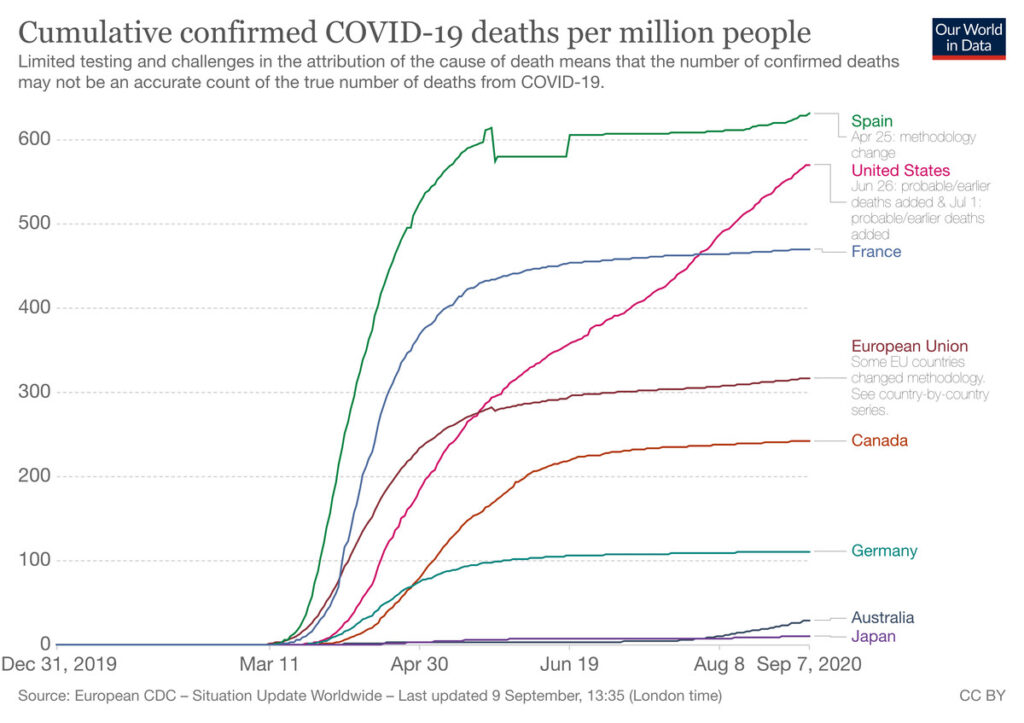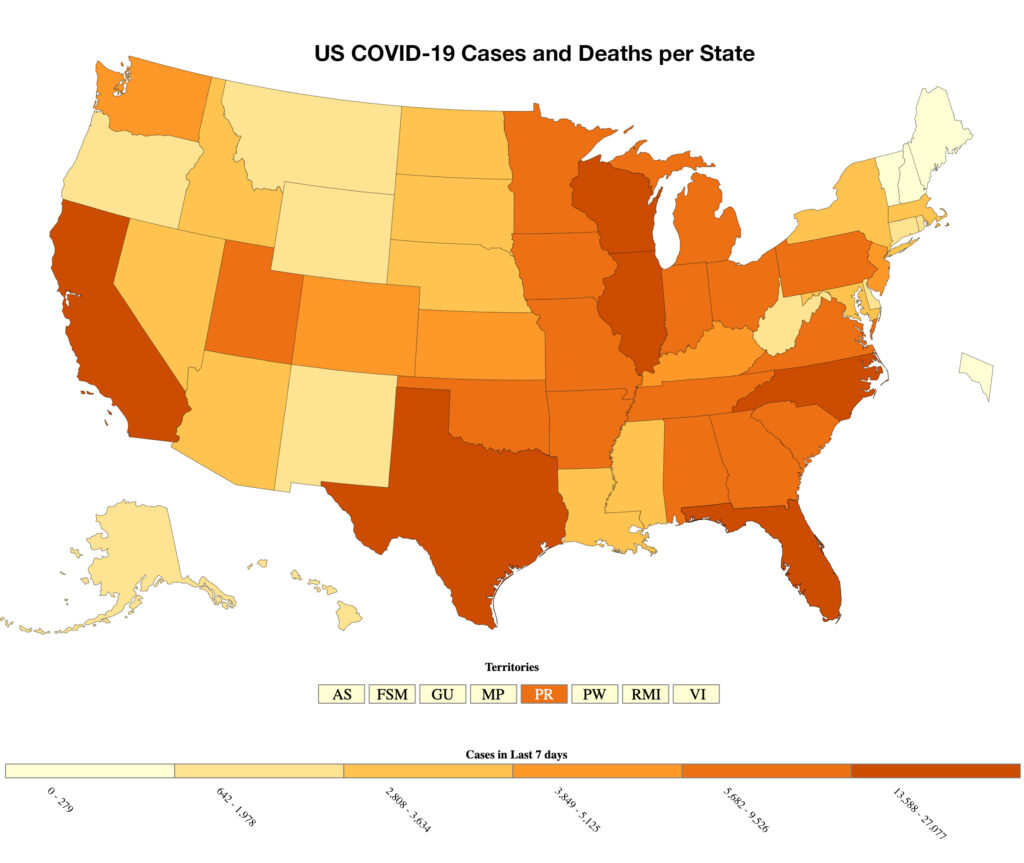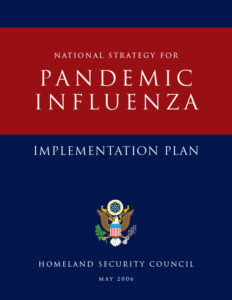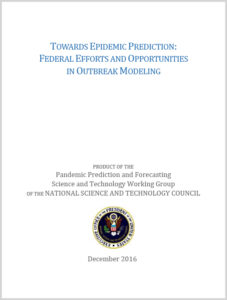Go straight to The Bottom Line
The news that President Trump has become infected with the Coronavirus underlines just how completely the pandemic has disrupted life in America – and how persistent and contagious that virus really is. How has Covid-19 affected you? Maybe you, or someone you love, has been ill? A friend or relative has died? The restaurant or business where you work has closed? You haven’t seen your grandmother in months for fear of transmission? Or maybe you are struggling with ways to send your child to school. Every American has been affected, directly or indirectly, by Covid-19. This pandemic has infiltrated every aspect of our lives, from the most ordinary moments to the most special, from how we shop for groceries to how we get married. It is penetrated the White House, the most protected place in the entire country. This has been the most disruptive force that the world, and the U.S., have known since World War II. Most experts say it will get worse, this winter, before it gets any better. How did we get here, and who can best help us emerge from this crisis?
First, Some Background
In 2005, after reading a book on the 1918 Spanish Flu pandemic while on vacation, President George W. Bush ordered the preparation of a detailed strategy to get America ready for future possible pandemics, calling for increased epidemiological research, improved vaccine technology, detailed quarantine plans, and more stockpiling of critical materials. This National Strategy for Pandemic Influenza Implementation Plan was released in May, 2006.
Over the eight years it was in office, the Obama-Biden administration adopted and built on this program, releasing in December 2016 – literally as Trump was preparing to assume the presidency – a report entitled “Towards Epidemic Prediction: Federal Efforts and Opportunities in Outbreak Modeling”.
The Trump administration ignored, and in fact dismantled, all this careful planning as well as the internal science-focused infrastructure that supported it. The day after Trump was inaugurated, the website for the President’s Council of Science & Technology (PCAST), the group that Obama had charged with developing his strategy, was taken down and all of its reports disappeared from the White House website. For two years, the directorship of the Office of Science and Technology Policy lay vacant and its staff was reduced by two-thirds. Trump finally appointed some new members to PCAST in November 2019, charging them with advising the president on the topic of “How does America win the Industries of the Future?“ The minutes of the council’s meeting on Feb. 3 and 4, 2020 include no discussion of Covid-19.
In three short years, America had completely lost its well-established preparedness for a pandemic.

How Did We Respond When Covid-19 Appeared?
The first case of Covid-19 in the U.S. was diagnosed on January 21. Although a coronavirus task force was established eight days later, it wasn’t fully staffed until the end of February, when Vice President Mike Pence was named its chair, and Deborah Birx named the response coordinator. Behind the scenes, Trump’s son-in-law Jared Kushner was also coordinating a shadow task force, and in late March it was reported that Kushner was working on a national testing plan, which almost all industrialized nations had implemented in their efforts to control the virus. The Kushner plan recognized the urgency of having tens of millions of tests available by fall for a successful opening of schools across the country. The plan included contact tracing infrastructure, a national database repository for testing results, and extensive anti-body testing to facilitate people returning to work.
By April, this plan was abandoned by the White House. On April 27, the President announced a new testing plan, with The New York Times reporting, “rather than one coordinated federal response, the Trump administration has been engaging on an ad hoc basis as states take the lead.” In fact, Trump publicly asked his people to “slow the testing down,” as more testing seemed to indicate more cases. The Trump administration’s decision to disseminate responsibility for virus management to the states has led to a range of Covid-19 policies across the country, including variations within state borders. Some of this variation is appropriate given different infection levels, but some has been driven by political persuasion and differing responses to scientific input.
The result of this approach: With 4% of the world’s population the United States has 20% of the global deaths from the virus. According to the CDC Data Tracker, as of September 29th, nearly 205,000 Americans have died of Covid-19 (equivalent to the entire population of the city of Houston, Texas). The total cases of Covid-19 in the U.S. now exceeds 7.1 million. In the one week leading up to 9/29, there were more than 300,000 new cases of Covid-19 in the United States, with the hot spots now concentrated in the mid-west and south as shown on the attached map. These numbers indicate that we are far from returning to our pre-Covid lives. Without a national plan, states are scrambling. The state-by-state disparate approaches to Covid-19 have resulted in some states banning residents of others from visiting without quarantine and has states vying with each other (and the federal government) for Personal Protective Equipment.

The Politicization of Masking – and a Vaccine
While experts agree that universal masking is the best way to protect yourself and others from the virus, with no universal masking plan – and no statement of encouragement from national leadership – even this simple preventative step has become a politicized statement rather than a tool against the virus. Robert Redfield, Director of the U.S. Center for Disease Control, testified to a Senate committee on September 16th, saying, “this face mask is more guaranteed to protect me against COVID than when I take a COVID vaccine,” and added that a vaccine would not be widely available to Americans until late in the second quarter of 2021. Within hours the President told reporters in a news briefing that Redfield “made a mistake,” and “must have misunderstood the question.” Moreover, Trump claimed here that a vaccine would very soon be readily available: “We’re all set to distribute immediately. We are set to — it could be in October, or in November. It could be later than that, but I think it will be in October.”
The Trump administration, to its credit, has invested heavily in vaccine research – though it has also withdrawn from long-established international norms for collaboration with other countries to pool learning and resources towards a quicker, better solution. A number of pharmaceutical companies including Pfizer, Moderna, and AstraZeneca have vaccines in the advanced stages of clinical trials. Reports say that the FDA is under pressure from the Trump administration to approve a vaccine before the November election, but experts attest that the Phase 3 trials are too crucial to rush; this is the stage when the drug is proved safe and effective. According to an article in Newsweek, a 2018 study from the journal of Biostatistics “found that two out of three vaccine candidates ultimately fail to be approved.” The companies manufacturing the vaccines have banded together to reassure the public that no vaccine would be approved and released before it is adequately tested.
What about Biden?
Joe Biden has developed a detailed program, The Biden Plan to Combat Coronavirus (Covid-19) and Prepare for Future Global Health Threats, which outlines his goals and a broad array of measures he would seek to implement. Key among those goals is the need to restore public trust in the federal government’s message, and Biden would launch this effort by calling both Democratic and Republican governors and mayors across the country to ensure that not only does the federal government speak with one voice, but that Americans hear the same message from state and local leaders. This is a diametrically different approach than Donald Trump’s “you’re on your own” philosophy. Biden has assembled what the Washington Post, in an article ironically published on 09/11/2020, calls a “war-cabinet-in-waiting” with key public health experts from prior administrations already drafting plans for distributing vaccines and personal protective gear, dramatically ramping up testing, reopening schools and addressing healthcare disparities. Biden intends for these measures to be ready-to-go, in case he wins the election, on January 20, 2021.
The Bottom Line
It is, we believe, fair to say that the Trump administration was ill-prepared for this, had in fact explicitly dismantled already-laid plans and preparations, and that its response to the coronavirus pandemic has been disjointed, lacking in cohesion, and likely driven by a desire to ensure that Donald Trump’s apparent strengths are maximized with respect to the upcoming election. While all Americans (or most, anyway) wish him a recovery to full health, it’s plainly evident that the White House’s rejection of CDC guidelines regarding distancing and its politicization of mask-wearing led directly to the infections in the White House, and to a growing number of others who attended Presidential gatherings in the days before the President was hospitalized.
Joe Biden has had no role in shaping America’s coronavirus response over the past year, but on a prospective basis, he has developed a clear plan that recognizes the serious risk and places science on an equal footing with economic and social objectives, and is laying the groundwork to implement his program immediately upon assuming the presidency. Trump’s program clearly has failed spectacularly and on this issue, a very different approach is called for.

